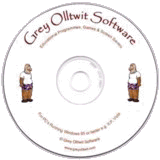
About Us
ADD/ADHD News
ADD/ADHD Books
ADDerwards
Creative ADDers
Donate
Events
GO Games
Information
Links
Natural Remedies
Research
Resources
Support Groups
Whats New
ADHD SOFTWARE
FREE DVD or CD

ADD/ADHD Online Information
Articles by Dr. Billy Levin
ADHD: Confusion and misconception
Written in February 2012 and revised in January 2013
© Dr. W.J. LEVIN MB ChB (Pta)
It is well documented that the left and right brain have specific functions. It is also well known that in the first two years of life the right (temperamental) brain is more dominant from birth, but the left (language) brain is slowly developing to become naturally dominant by school entry age - around six years of age.
If the left brain does not mature and become dominant, it results in neurological dysfunction. ADHD has been proven to be a genetically inherited neurological dysfunction, where either the left brain is immature (leading to ADD and a learning problem) or the right brain is too well developed (leading to hyperactivity and a behavioural problem), or various degrees of both (ADHD). But it is important to note that ADD and ADHD are not the same!
The classical mesomorphic features such as a high palate, tiny ear lobes, wide nasal bridge, curved little finger, symian palmer fold, webbed second/third toe, big space between big toe and next toe, and bottle brush hair seen frequently in ADHD cannot be caused by poor diet, sugar, neglect, or poor parenting. These features are there from birth. As superficial structures, such as skin and the human brain are both of ectodermal origin in the embryo, any genetically inherited dysfunction of brain might well be accompanied by manifestations of variation in the superficial structures like skin. The conventional treatment of ADHD aims to boost the left brain with stimulants (Ritalin) to provide better neurological balance and to make the person more amenable to being taught until, hopefully, the left brain matures. Any sedative medication suppresses the immature left brain more than right brain, exacerbating the ADHD.
The correct medication is safe and non-addictive, however, in order to be effective, it has to be prescribed at an optimal effective dose to cover at least 12 hours in a day. Thus, monitoring on a monthly basis using rating scales is essential. Equally important is parent and teacher education and guidance.
It is equally well documented that good, healthy nutrition is essential for a child to develop his or her full academic and social potential while being given the optimal environmental opportunity to do so. Deficits in these areas will not cause a neurological dysfunction, such as ADHD, but may certainly aggravate it. It is essential to understand that food and the environment cannot cause a genetically inherited neurological condition. Therefore, diet plays no part in the treatment of ADHD unless there is an additional nutritional deficiency. This should be corrected if possible, but it is not part of treating ADHD - there is no scientific research to validate the concept that diet plays a part in ADHD treatment.
The same applies to the misconception that excess sugar intake causes hyperactivity. How can sugar boost the right brain and at the same time do nothing to the left side? If sugar was implicated, all untreated diabetics would be hyperactive.
There are, unfortunately, major misconceptions in all medical conditions, but with time, research and insight, they eventually become factually and correctly documented. In ADHD this is no different. Feingold suggested colorants were a problem many years ago. Ignorant advisors suggested parents were to blame for not disciplining their children. Anoxia at birth was also blamed, as was bad teaching in overcrowded schools. Even pharmaceutical companies have been accused of having concocted a non-existent condition to be able to peddle their pharmaceutical drugs.
Clearly, environmental and nutritional factors must be looked at - but ADHD is inherited and nobody is to blame for the condition. Some blame must rest on ignorant professionals’ shoulders, as they are obviously the ones to see, rectify and educate the lay person. Major damage is done when unintended misinformation is suggested by professionals – and it is even worse when ulterior motives are at work!
A few years ago, 81 fully appointed academic professors worldwide signed an official protest objecting to misinformation about ADHD that might persuade people not to seek expert medical advice and safe effective treatment.
Most experts working with ADHD suggest so many ADHD patients arrive for the first neurological evaluation, having already seen many other so-called “professionals” already. Most have had so many unnecessary tests and incorrect medical treatments with little or no success. Some therapies have actually made the ADHD worse. However, a world authority like Prof Keith Conners suggests there is no controversy or confusion between experts, only minor variations in opinion. There is major confusion and disagreements between non experts! There is a deeply serious need to rectify this very serious situation for the sake of our children, their parents and society. Neglect is causing our country and our patients millions. The cost of treatment is far more economical than the cost of neglect!
Dr.W.J. Levin, Written in February 2012 and revised in January 2013
Back To Articles
Home About Us ADD/ADHD News ADDerwards Advertising Books Contact Us Creative ADDers Donate
Events Forums Information Links Natural Remedies ADDers.org News Research Resources Search adders.org
Site Map Social Stories Sponsor Events Student/Researchers Support Groups Supporters

ADHD SOFTWARE
FREE DVD or CD
